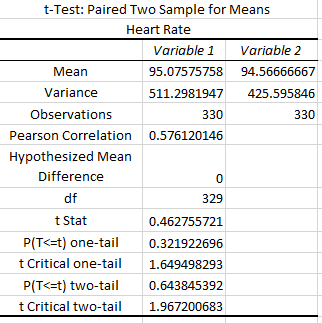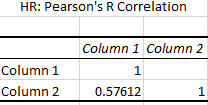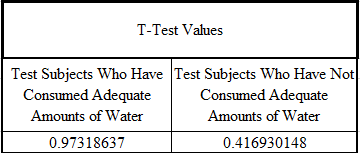BME100 s2015:Group2 12pmL3
| Home People Lab Write-Up 1 | Lab Write-Up 2 | Lab Write-Up 3 Lab Write-Up 4 | Lab Write-Up 5 | Lab Write-Up 6 Course Logistics For Instructors Photos Wiki Editing Help | |||||||
|
OUR TEAM
LAB 3A WRITE-UPDescriptive Statistics
Results
Analysis
Summary/DiscussionFrom the experience of using the Spree device, the group came across several design flaws in the device. The first major flaw that we discovered, was that the temperature gauge was on a scale from 1-4, rather that giving an exact value. The Spree headband advertises that the headband can read the users' temperature; however, that is not the case. To fix this flaw, our group recommends that the Spree device simply uses a temperature value rather than an ambiguous scale.
LAB 3B WRITE-UPTarget Population and NeedTarget Population: The Hydro-Ring targets any person who is able to wear a ring or necklace and clasp. The clasp and ring allow for a gender neutral target. Any person who wants to stay healthy, hydrated, and have optimal performance (sports, weight-loss, etc) can wear and use this device. Dehydration is a big problem in many states which experience warmer climates. In the United States alone, approximately 500,000 people annually receive some form of medical attention due to dehydration. Dehydration serves as a big problem because a loss of as little as 3% of body mass water percentage increases one risk of heart illness and organ failure. In the United State, the southern states - typically from South Carolina stretching South and West all the way to California - experience the highest prevalence of medical care needed due to dehydration. These people face warmer and more humid climates than many places in the United States, and as a result, sweat more frequently leading to a loss of water and an increased prevalence of dehydration. The 500,000 people and others like them who experience this harsh climate annually, could make use of the Hydro-Ring which integrates hydration analysis into a fashionable and convenient device designed to help those in this climate stay healthy and hydrated. Needs: Performance begins to decrease at 1-2% dehydration, at 3% dehydration the risk of heart illness significantly increases. The average person, without exercise, looses 90 ounces of water per day. This means even non-athletes loose a significant amount of water each day, and are at risk of dehydration. If dehydration reaches levels of 7%, those people can collapse. Not only is staying hydrated optimal for one's health, staying hydrated can also increase weight loss, decrease hunger, and balance the metabolism. This leads to an overall increase in health. These health needs are found in all people and the Hydro-Ring reaches all these needs by alerting people when they come out of the optimal hydration range. The device alerts them when they need fluids and how much they need to consume in order to reestablish hydration. Many people use thirst as a guide of when they should drink; however, once a person is thirsty they are already dehydrated. This device alerts the user before they feel thirsty and before they are already dehydrated. This is accomplished by linking the microsensor in the device to a phone app via Bluetooth. The ring is always on and the contents of the person's sweat and is constantly being analyzed by the processing chip under the microsensor. When a person begins to become dehydrated or their hydration levels begin to fall - the app sends a notification to the user and tells them how much to drink. This meets the needs of a society where dehydration is an issue due to a warm climate. Instead of having to worry to remember to drink water even when they're not thirsty, the ring and app does this for them. This is important as a means to help those in warm climates stay hydrated as a means to preserve their health.
Device DesignStrongest: Product Variety, Affordability, Appearance Customer Needs
Weakest: Accuracy, Energy Consumption, Manufacting Process Engerineering Requirements
Strengths:
Affordability vs. Material Selection: The materials are outsourced through third party manufacturers making our product lines affordable.
Weakness:
Inferential Statistics
Because the Hydro-Ring analyzes the electrolyte concentration of sweat in order to test hydration levels, the Gold Standard comparison used was an urinalysis of the kidneys. This analysis checked the electrolyte concentration of the kidneys in order to get a direct measurement for how dehydrated a person may be. The more dehydrated, the higher the concentration of electrolytes. The more hydrated, the lower the concentration of electrolytes due to the dilution of the electrolytes. Each patient's electrolyte concentration in grams per milliliter was taken via Gold Standard and via the Hydro-Ring. After measuring each person, the second phase began. The test subjects were denied water for an eight hour period and kept in the lab. This functioned to adequately dehydrate the test subjects and therefore change the concentration of electrolytes in their bodies. After these eight hours, their electrolyte concentrations were once again taken using Gold Standard and the Hydro-Ring. After these measurements were taken, a T-Test was used in order to compare the difference in the measurements of Gold Standard and Hydro-Ring. A T-Test was ran for each part of the experiment - hydration and dehydration phase. Because there were only two groups of comparison - Gold Standard and Hydro-Ring - only a T-Test needed to be ran. When subjects were adequately hydrated, the T-Test yielded that there is no statistical significance between Hydro-Ring and Gold Standard. This means that the two yield measurements very close to one another. When subjects were dehydrated, the T-Test revealed that there is no statistical significance between Hydro-Ring and Gold Standard. The results of these statistics reveals that the Hydro-Ring is accurate and comparable to Gold Standard measurements.
Graph
|
|||||||



















